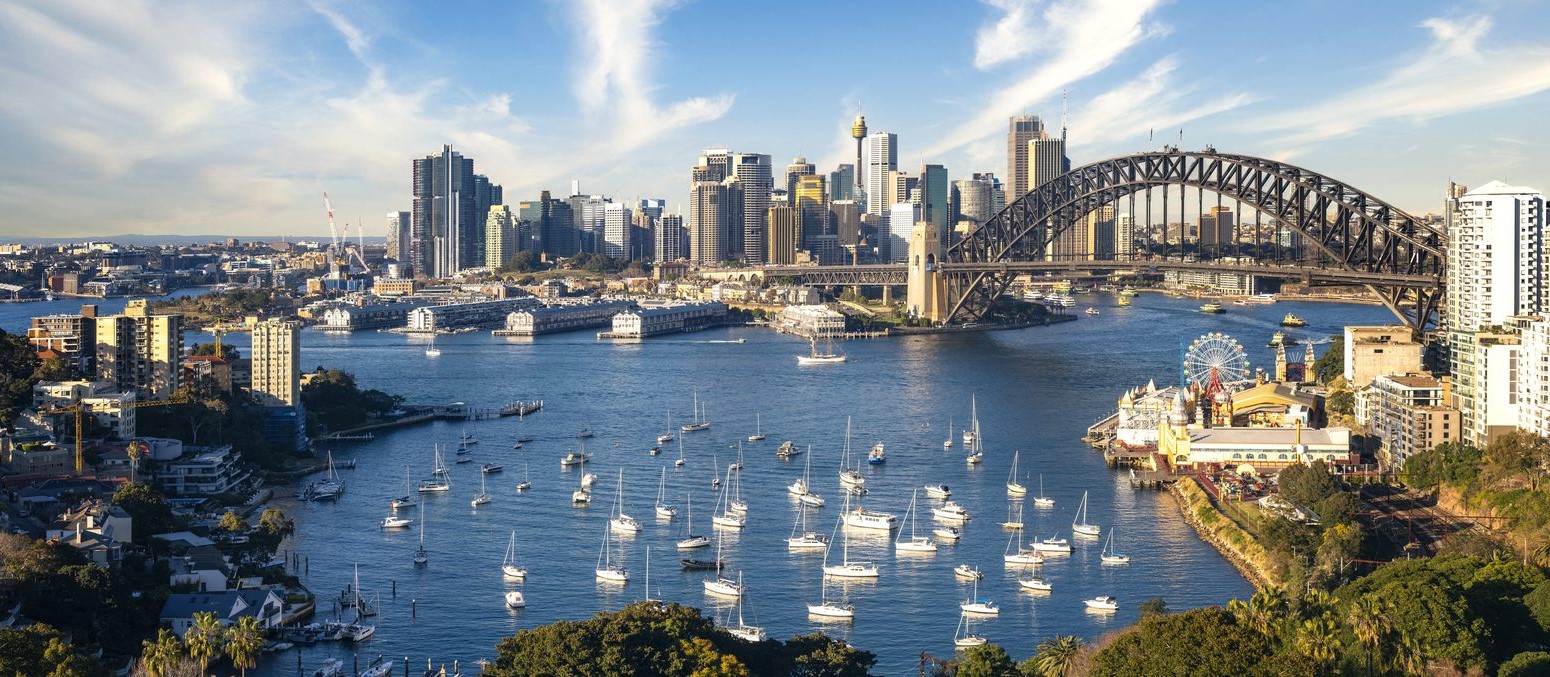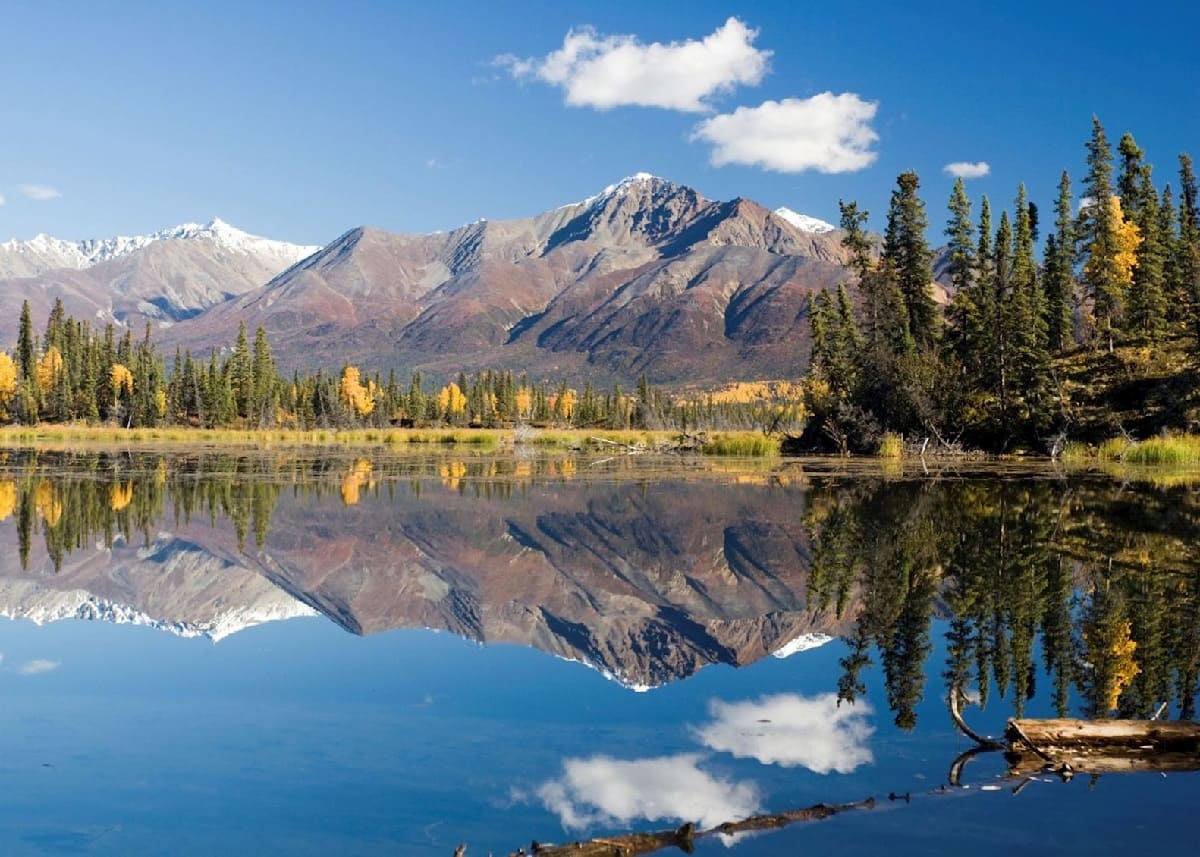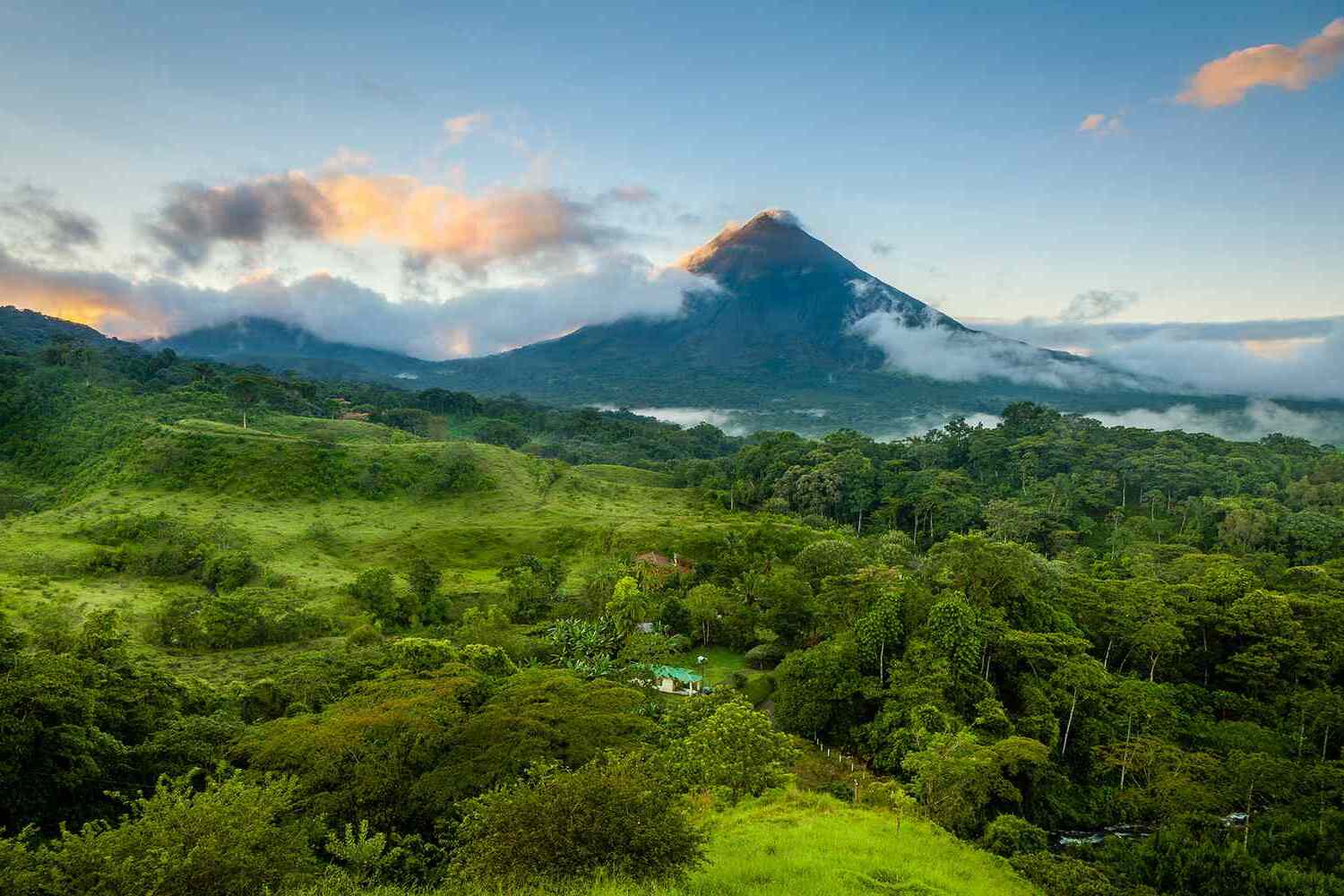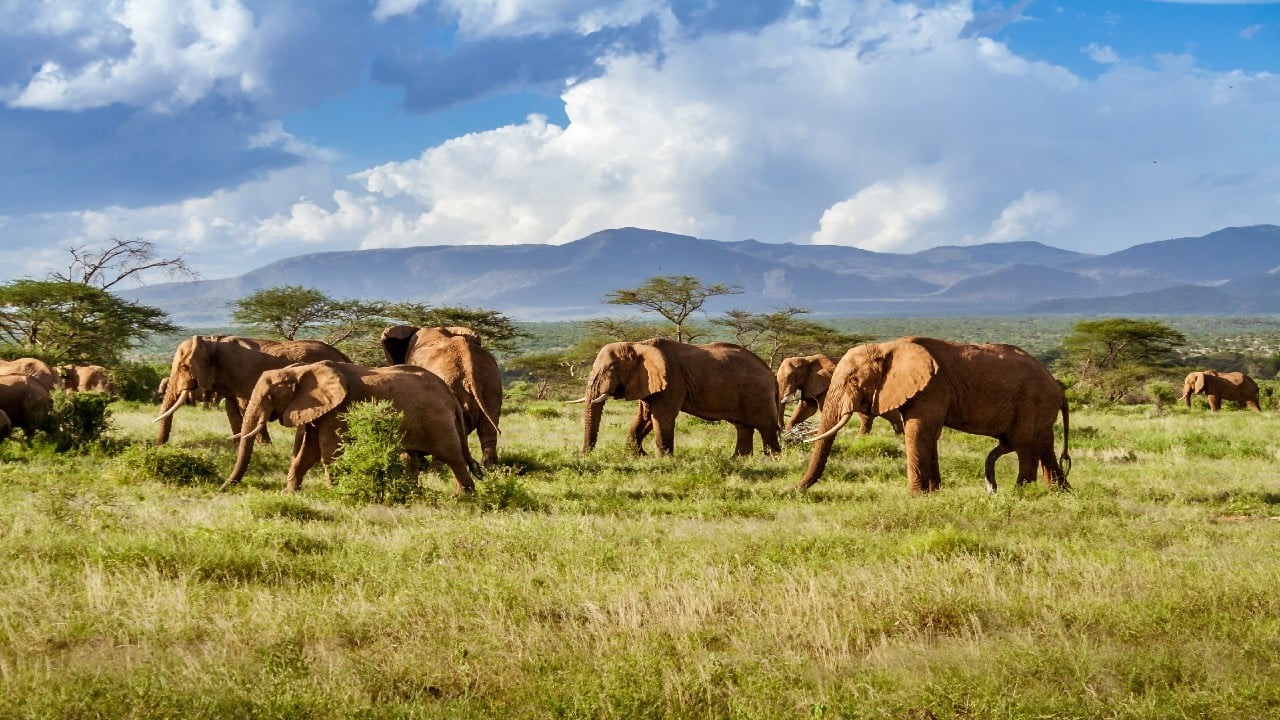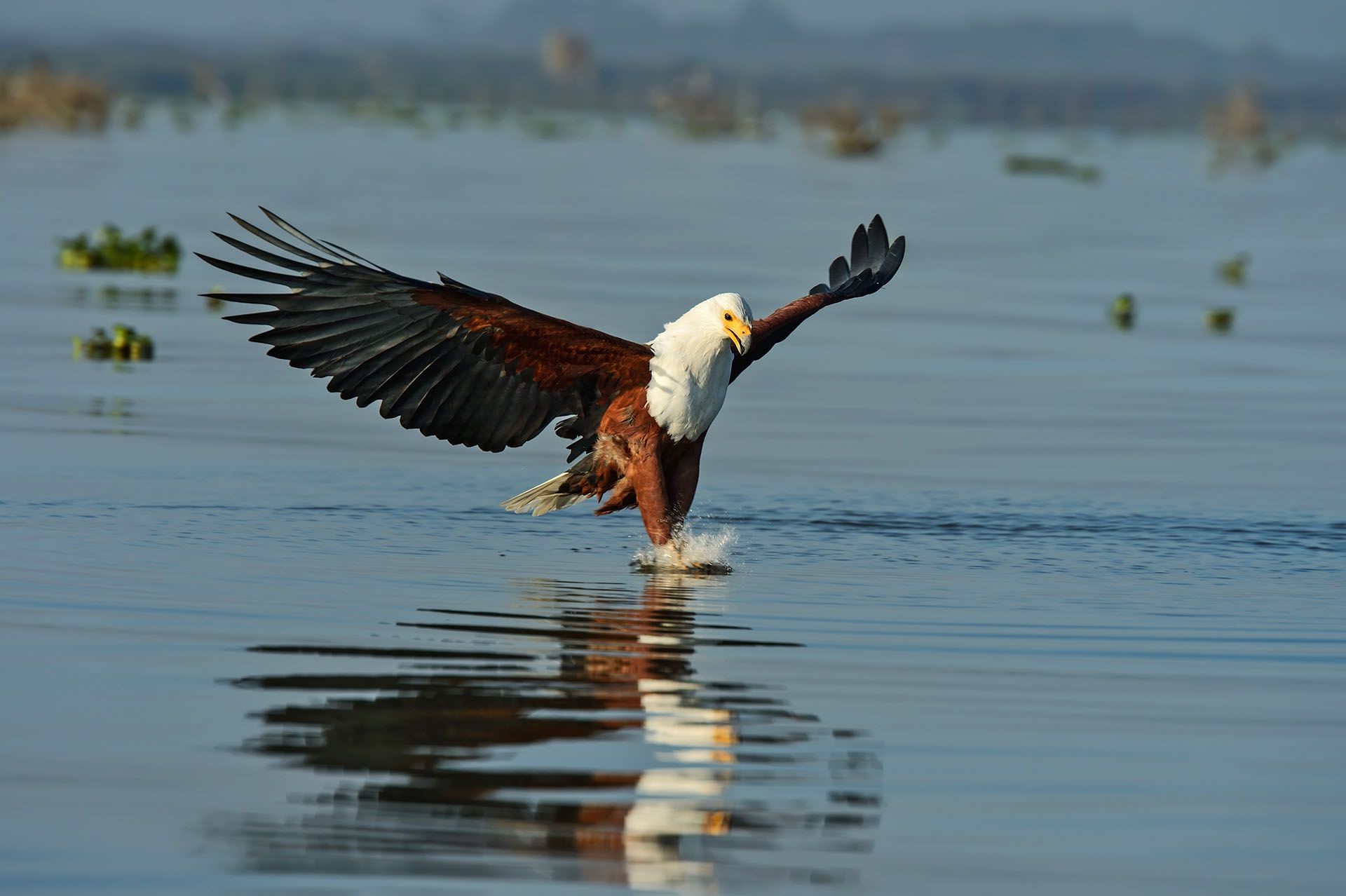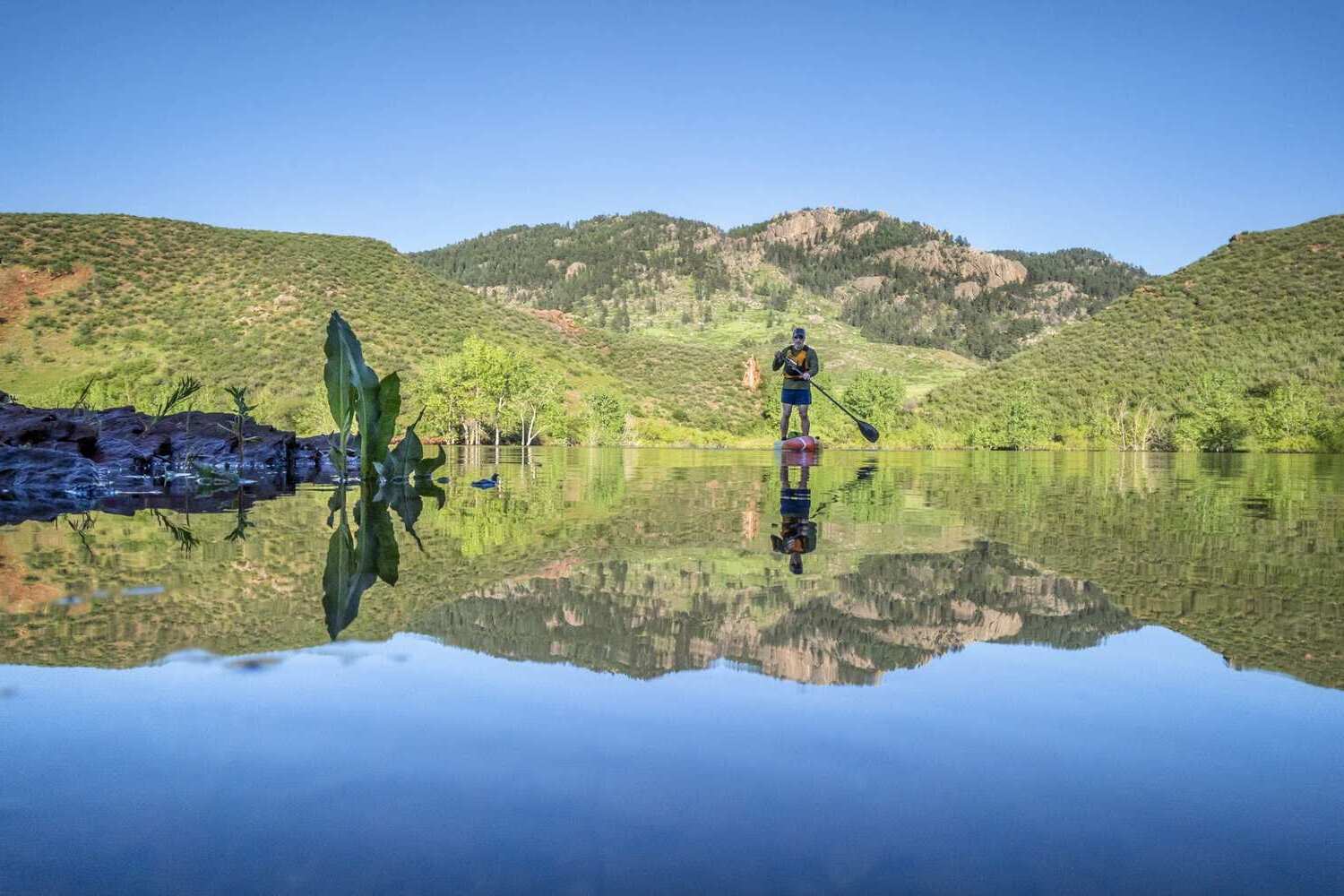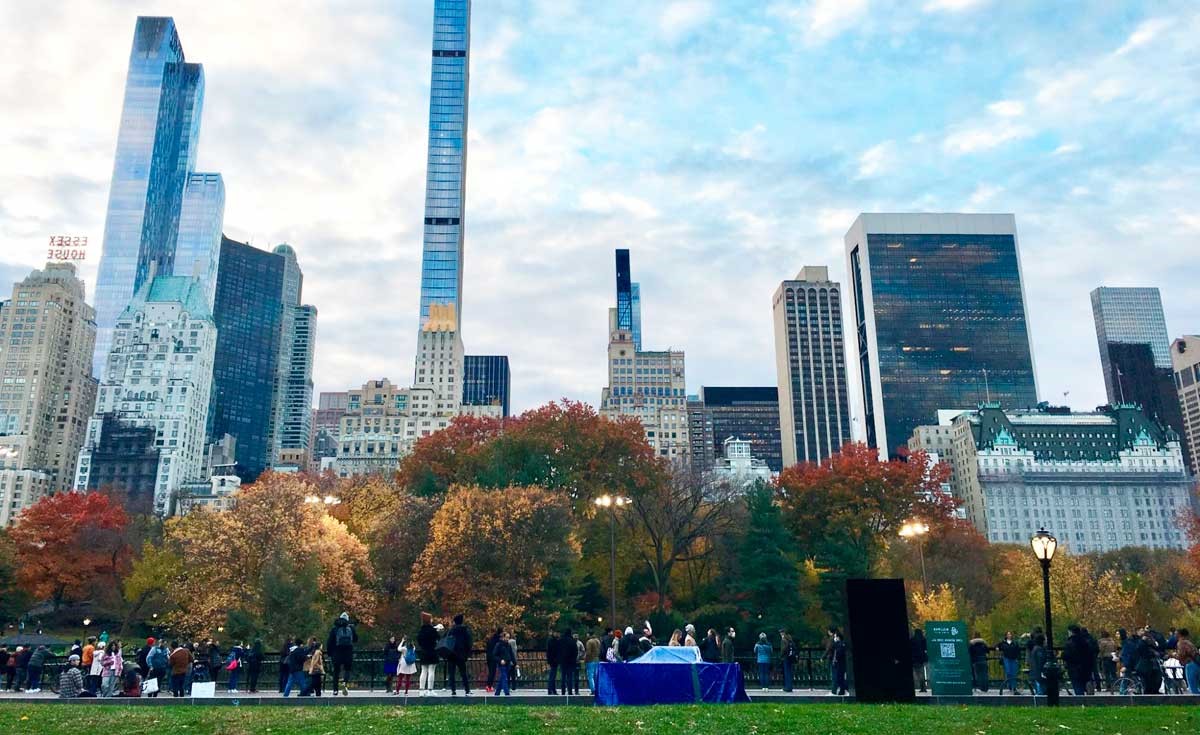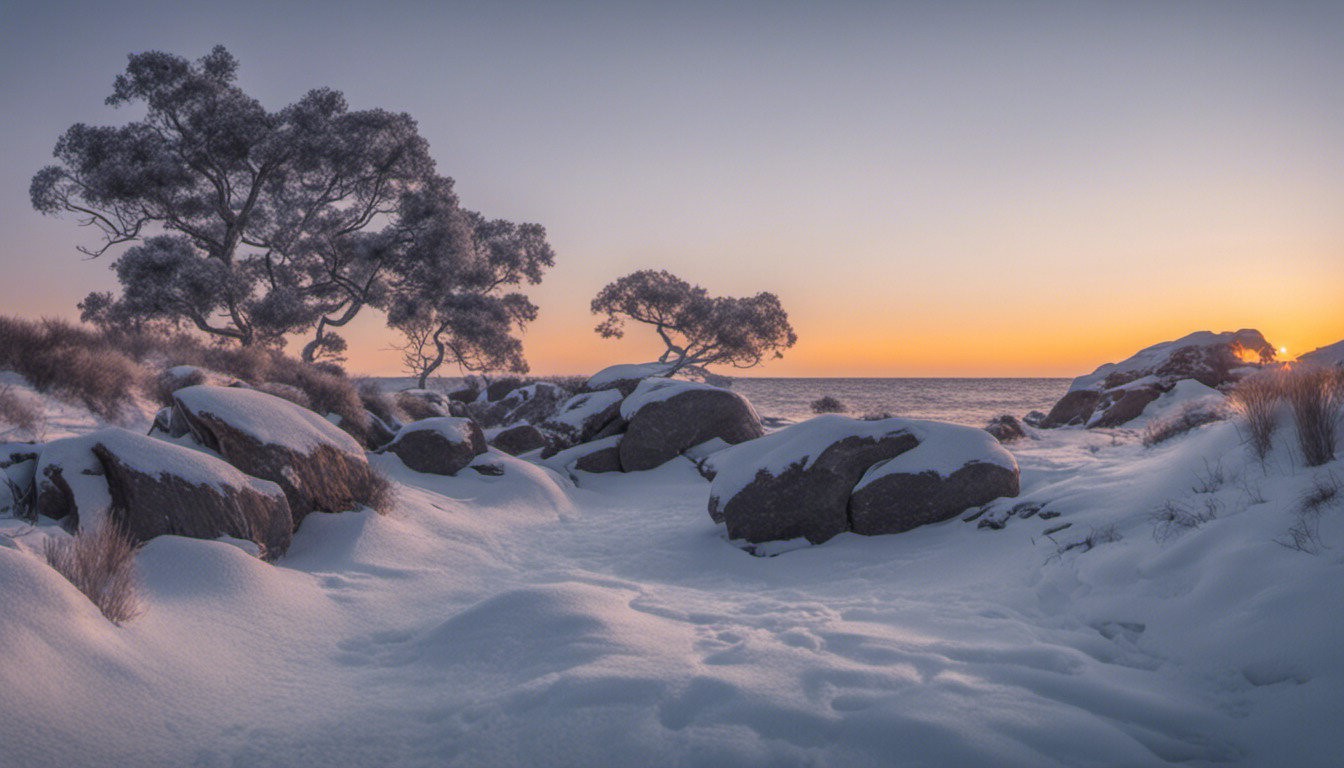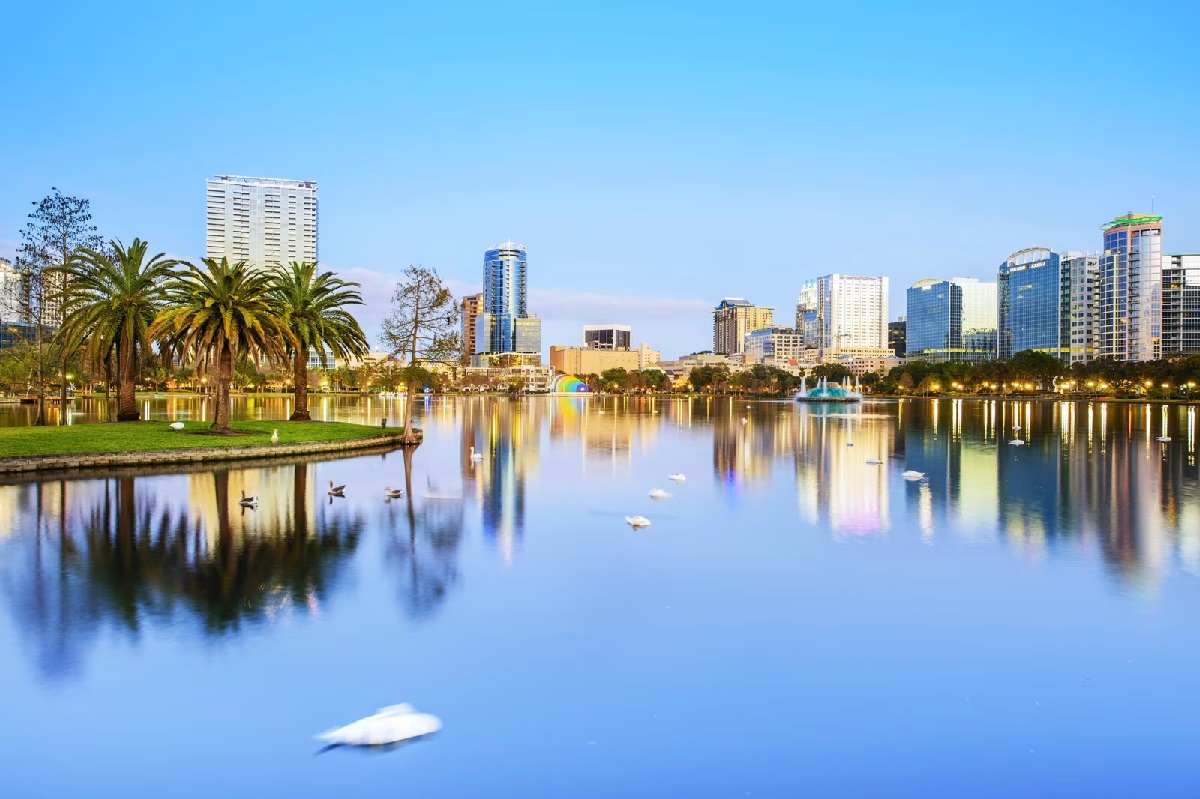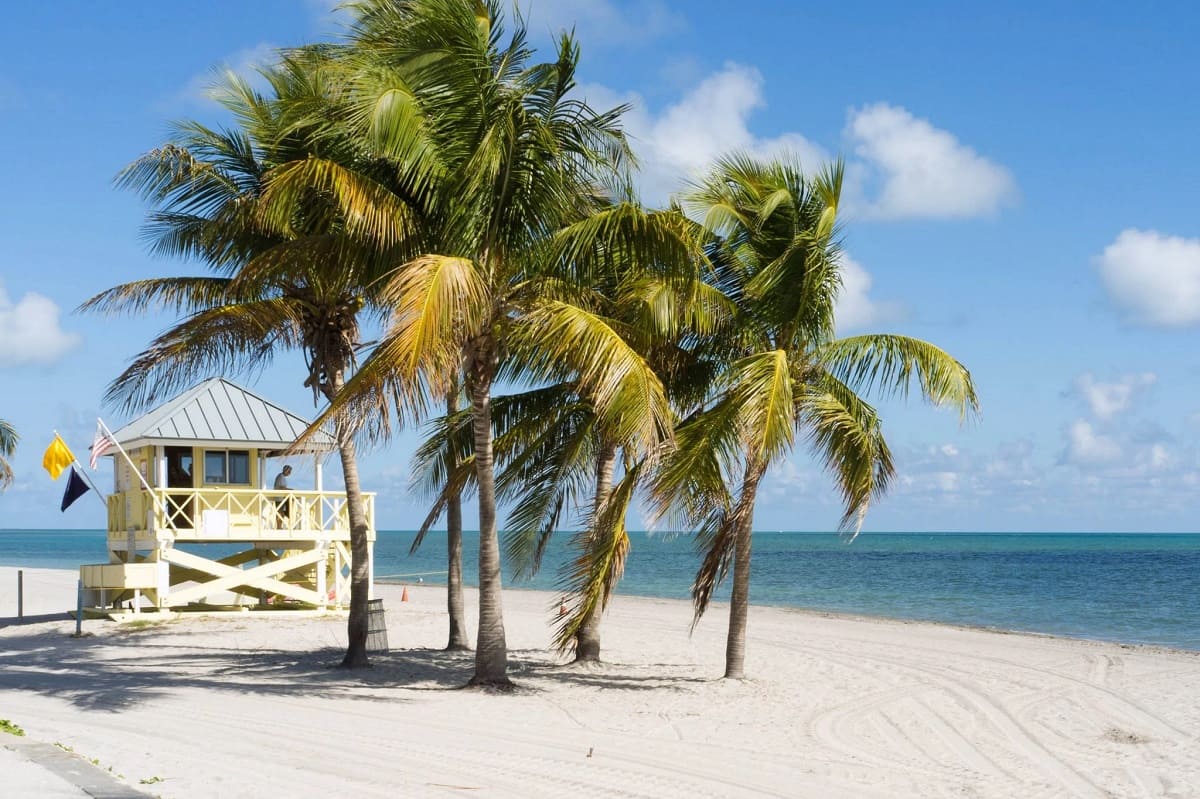Home>Weather and Climate>August Weather In Australia: A Comprehensive Guide
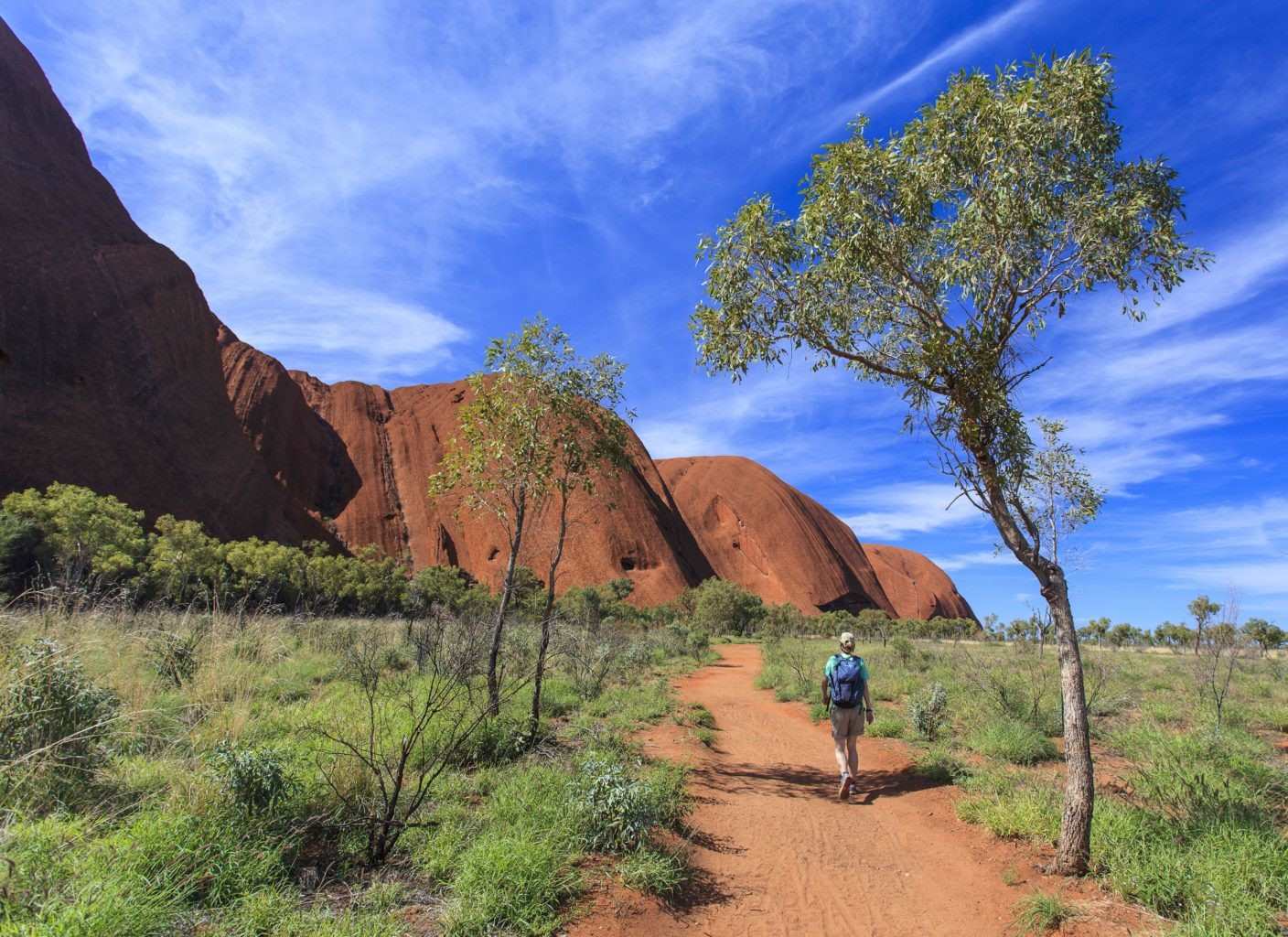

Weather and Climate
August Weather In Australia: A Comprehensive Guide
Published: March 6, 2024
Discover the diverse weather and climate patterns in Australia with our comprehensive guide to August weather. Plan your trip with confidence and make the most of your visit.
(Many of the links in this article redirect to a specific reviewed product. Your purchase of these products through affiliate links helps to generate commission for Temperatures.com, at no extra cost. Learn more)
Table of Contents
Overview of August Weather in Australia
August marks the last month of winter in the southern hemisphere, and in Australia, it brings a diverse range of weather conditions across the continent. As the country spans a vast area, the weather in August varies significantly from region to region, offering a unique experience for travelers and locals alike.
In the northern regions of Australia, including Darwin and Cairns, August brings warm and pleasant temperatures, with an average high of around 31°C (88°F) and a low of 20°C (68°F). These regions experience a tropical climate, characterized by high humidity and the occasional afternoon thunderstorm. The lush landscapes and vibrant flora make these areas a haven for nature enthusiasts and adventure seekers.
Moving southward, cities like Brisbane and Sydney experience milder temperatures in August, with average highs of 21-22°C (70-72°F) and lows of 10-11°C (50-52°F). While these cities may encounter occasional rainfall, the weather generally remains comfortable, making it an ideal time for outdoor activities and exploring the urban attractions.
In the southern regions, including Melbourne and Adelaide, August brings cooler temperatures, with average highs ranging from 14-16°C (57-61°F) and lows of 6-8°C (43-46°F). The crisp air and occasional rainfall create a refreshing ambiance, perfect for enjoying cultural events, culinary delights, and scenic drives through the picturesque landscapes.
Across the western coast, cities like Perth experience dry and mild weather in August, with average temperatures ranging from 8-19°C (46-66°F). The clear skies and pleasant temperatures offer an excellent opportunity for outdoor adventures, beach outings, and exploring the renowned wineries in the region.
In the central regions, including Alice Springs and Uluru, August brings sunny days and cool nights, with average temperatures ranging from 4-20°C (39-68°F). The clear, blue skies and comfortable weather provide an ideal setting for exploring the awe-inspiring natural wonders and experiencing the rich indigenous culture of the Outback.
As August unfolds, the diverse weather patterns across Australia create a tapestry of experiences, inviting travelers to immerse themselves in the unique charms of each region. Whether it's basking in the tropical warmth of the north, savoring the mild days of the east coast, embracing the cool ambiance of the south, relishing the clear skies of the west, or discovering the wonders of the Outback, Australia in August offers a captivating blend of climates and experiences for all to enjoy.
Average Temperatures in Different Regions
In August, Australia showcases a remarkable diversity of temperatures across its various regions, offering a spectrum of climates that cater to different preferences and interests. The northern regions, including Darwin and Cairns, experience warm and balmy weather, with average highs hovering around 31°C (88°F) and lows of 20°C (68°F). The tropical climate in these areas creates an inviting atmosphere for outdoor adventures and leisurely pursuits, making them popular destinations for travelers seeking a tropical escape.
Moving southward, cities like Brisbane and Sydney enjoy milder temperatures during August, with average highs ranging from 21-22°C (70-72°F) and lows of 10-11°C (50-52°F). This moderate climate provides an ideal setting for exploring urban attractions, indulging in outdoor activities, and savoring the vibrant city life. The occasional rainfall adds a refreshing touch to the ambiance, enhancing the overall experience for visitors and locals alike.
In the southern regions, including Melbourne and Adelaide, August brings cooler temperatures, with average highs ranging from 14-16°C (57-61°F) and lows of 6-8°C (43-46°F). The crisp air and occasional rainfall create a refreshing ambiance, perfect for enjoying cultural events, culinary delights, and scenic drives through the picturesque landscapes. This cooler climate offers a unique opportunity to experience the charm of these cities in a different light, making it an appealing time for travelers seeking a more temperate environment.
On the western coast, cities like Perth boast dry and mild weather in August, with average temperatures ranging from 8-19°C (46-66°F). The clear skies and pleasant temperatures offer an excellent opportunity for outdoor adventures, beach outings, and exploring the renowned wineries in the region. The mild climate creates an inviting backdrop for leisurely pursuits and outdoor exploration, making it an attractive destination for those seeking a relaxed and laid-back atmosphere.
In the central regions, including Alice Springs and Uluru, August brings sunny days and cool nights, with average temperatures ranging from 4-20°C (39-68°F). The clear, blue skies and comfortable weather provide an ideal setting for exploring the awe-inspiring natural wonders and experiencing the rich indigenous culture of the Outback. This unique climate offers a captivating contrast, allowing visitors to immerse themselves in the rugged beauty and ancient heritage of the Australian interior.
As August unfolds, the diverse range of temperatures across Australia creates a tapestry of experiences, inviting travelers to embrace the distinct climates and immerse themselves in the unique charms of each region. Whether it's the tropical warmth of the north, the mild days of the east coast, the cool ambiance of the south, the clear skies of the west, or the wonders of the Outback, Australia in August offers a captivating blend of climates and experiences for all to enjoy.
Rainfall Patterns in August
In August, Australia experiences diverse rainfall patterns across its various regions, contributing to the unique tapestry of climates and landscapes that define the continent. Understanding the precipitation trends during this month is essential for travelers and locals alike, as it influences outdoor activities, natural landscapes, and overall travel experiences.
In the northern regions, including Darwin and Cairns, August brings the tail end of the dry season, characterized by lower rainfall and occasional afternoon thunderstorms. The tropical climate in these areas typically results in short, intense bursts of rainfall, often followed by clear skies and sunshine. This pattern creates a refreshing contrast, as the brief downpours rejuvenate the lush vegetation and contribute to the region's vibrant ecosystem. Travelers visiting these areas in August can witness the captivating spectacle of tropical storms, followed by the rejuvenating sight of glistening landscapes bathed in sunlight.
Moving southward to cities like Brisbane and Sydney, August marks the transition towards spring, with the occasional rainfall contributing to the rejuvenation of the natural surroundings. The moderate rainfall patterns during this time of year add a touch of freshness to the urban landscapes and surrounding countryside, creating a picturesque backdrop for outdoor exploration and nature-based activities. The intermittent showers often give way to clear skies, allowing visitors to experience the dynamic interplay between rain and sunshine, which brings out the natural beauty of the region.
In the southern regions, including Melbourne and Adelaide, August brings a higher likelihood of rainfall, contributing to the region's lush greenery and picturesque landscapes. The steady rainfall patterns during this month contribute to the region's renowned gardens, parks, and vineyards, creating a captivating ambiance for visitors. The gentle showers often enhance the scenic beauty of the area, adding a touch of romance to the cultural experiences and outdoor excursions available in these cities.
On the western coast, cities like Perth experience minimal rainfall in August, with the dry climate prevailing throughout the month. The scarcity of rainfall contributes to the region's arid landscapes and clear blue skies, creating an ideal setting for outdoor adventures and beach activities. The absence of significant rainfall allows travelers to enjoy the natural splendor of the region, from its pristine beaches to its rugged hinterland, without the interruption of wet weather.
In the central regions, including Alice Springs and Uluru, August brings minimal rainfall, with clear, dry days dominating the weather patterns. The arid climate of the Outback remains relatively unchanged during this month, offering visitors the opportunity to explore the ancient landscapes and cultural heritage without the hindrance of wet weather. The absence of significant rainfall allows travelers to immerse themselves in the raw beauty and timeless allure of the Australian interior, creating a truly unique and unforgettable experience.
As August unfolds, the varied rainfall patterns across Australia contribute to the diverse experiences available to travelers, from the tropical storms of the north to the gentle showers of the south, and the arid landscapes of the central and western regions. Understanding these precipitation trends allows visitors to appreciate the natural beauty and dynamic landscapes that define Australia in August, creating a deeper connection to the country's rich and diverse environment.
Popular Activities and Events in August
August in Australia is a vibrant and dynamic month, offering an array of exciting activities and events that cater to diverse interests and passions. From cultural celebrations to outdoor adventures, this month presents an opportunity for travelers and locals to immerse themselves in the rich tapestry of experiences that define the Australian landscape.
In the northern regions, including Darwin and Cairns, August marks the peak of the dry season, creating an ideal setting for exploring the tropical wonders of the area. Visitors can embark on immersive wildlife tours, where they can witness the diverse flora and fauna that thrive in the region's lush ecosystems. Additionally, August brings the much-anticipated Darwin Festival, a vibrant celebration of arts, music, and culture, featuring an eclectic lineup of performances, exhibitions, and culinary experiences. The festival provides a captivating insight into the region's creative spirit and indigenous heritage, making it a must-visit event for those seeking a deeper understanding of Australia's cultural diversity.
Moving southward to cities like Brisbane and Sydney, August offers a plethora of activities that blend urban sophistication with natural beauty. Travelers can indulge in scenic harbor cruises, taking in the iconic landmarks and breathtaking vistas that define these coastal cities. Furthermore, August heralds the arrival of the Brisbane Ekka, a beloved agricultural show that showcases the region's rich agricultural heritage through livestock exhibitions, artisanal displays, and thrilling entertainment. In Sydney, the popular Bondi Winter Magic festival transforms the iconic Bondi Beach into a hub of winter festivities, featuring art installations, live performances, and vibrant markets, creating a lively and enchanting atmosphere for visitors and locals alike.
In the southern regions, including Melbourne and Adelaide, August presents an array of cultural and culinary experiences that captivate the senses. Visitors can partake in the Melbourne International Film Festival, a renowned event that celebrates the art of cinema through a diverse selection of screenings, discussions, and industry events. Additionally, the South Australian Living Artists (SALA) Festival in Adelaide showcases the region's vibrant arts scene, with a myriad of exhibitions, workshops, and performances that highlight the creativity and talent of local artists. These events provide an immersive journey into the cultural pulse of these cities, offering a deeper appreciation for the arts and creativity that thrives in the southern regions of Australia.
On the western coast, cities like Perth offer a blend of outdoor adventures and cultural experiences in August. Travelers can explore the scenic beauty of Kings Park and Botanic Garden, where the vibrant wildflower displays create a stunning tapestry of colors against the backdrop of the city skyline. Additionally, the Avon Descent, a thrilling river race that spans over two days, attracts participants and spectators alike, offering an exhilarating spectacle of water sports and community camaraderie. These events and natural attractions provide a captivating insight into the unique allure of the western coast, inviting visitors to embrace the region's natural splendor and adventurous spirit.
In the central regions, including Alice Springs and Uluru, August offers a profound connection to the ancient landscapes and indigenous heritage of the Outback. Visitors can embark on guided tours to explore the iconic Uluru-Kata Tjuta National Park, where the timeless rock formations and sacred sites reveal the rich cultural significance of the area. Additionally, the Alice Desert Festival celebrates the region's artistic and cultural heritage through a diverse program of performances, workshops, and exhibitions, providing a captivating glimpse into the creative spirit that thrives in the heart of Australia. These events and experiences offer a transformative journey into the spiritual and natural wonders of the Outback, creating a deep and lasting connection to the ancient landscapes and indigenous traditions that define this region.
As August unfolds, Australia comes alive with a tapestry of activities and events that reflect the country's diverse cultural, natural, and artistic heritage. From the tropical north to the arid Outback, and the bustling cities to the tranquil coast, this month offers a captivating array of experiences that invite travelers to embrace the unique charms of each region, creating lasting memories and a deeper appreciation for the rich tapestry of Australian life.
Packing Tips for Traveling to Australia in August
When preparing for a trip to Australia in August, it's essential to pack strategically to ensure comfort and preparedness for the diverse weather conditions across the continent. Here are some valuable packing tips to consider for a memorable and hassle-free travel experience:
1. Layered Clothing:
Given the varying temperatures in different regions, packing lightweight, breathable layers is crucial. For the northern areas, including Darwin and Cairns, lightweight and moisture-wicking clothing is ideal to combat the humidity. In the southern regions, such as Melbourne and Adelaide, a mix of long-sleeved shirts, sweaters, and a waterproof jacket will provide versatility for fluctuating temperatures and occasional rainfall.
2. Comfortable Footwear:
Whether exploring urban landscapes, hiking through national parks, or strolling along coastal paths, comfortable and sturdy footwear is a must. For tropical regions, lightweight and breathable shoes are recommended, while waterproof and durable footwear is essential for areas prone to rainfall.
3. Sun Protection:
With Australia's reputation for abundant sunshine, packing sun protection essentials is vital. This includes broad-spectrum sunscreen, sunglasses with UV protection, wide-brimmed hats, and lightweight, long-sleeved clothing to shield from the sun's rays, especially in the northern and central regions.
4. Insect Repellent:
In tropical and coastal areas, particularly in the north, insect repellent is essential to ward off mosquitoes and other biting insects. Packing a reliable insect repellent will ensure a more comfortable outdoor experience.
5. Travel Adapters and Chargers:
Australia uses Type I electrical outlets, so packing the appropriate travel adapters and chargers for electronic devices is essential. This ensures that you can stay connected and powered up throughout your journey.
6. Reusable Water Bottle:
Staying hydrated is crucial, especially in warmer regions. Packing a reusable water bottle allows you to refill and stay hydrated while reducing plastic waste, aligning with Australia's eco-friendly initiatives.
7. Travel Documents and Insurance:
Ensuring you have all necessary travel documents, including a valid passport, visa (if applicable), and travel insurance, is essential for a stress-free trip. It's advisable to keep digital and physical copies of important documents in separate, secure locations.
8. Outdoor Gear:
For those planning outdoor adventures, such as hiking, snorkeling, or wildlife excursions, packing appropriate gear is essential. This may include a compact daypack, swimwear, snorkeling gear, and binoculars for wildlife spotting.
Read more: Understanding Australia’s Summer Climate
9. Medications and First-Aid Kit:
Bringing essential medications and a compact first-aid kit is advisable. This ensures you are prepared for any minor health concerns and allows for peace of mind while exploring remote or natural areas.
By considering these packing tips, travelers can prepare for the diverse climates and experiences that Australia offers in August, ensuring a comfortable, safe, and enjoyable journey across this captivating continent.
Tips for Staying Safe in August Weather
Staying safe in August weather in Australia involves being mindful of the diverse climatic conditions and taking proactive measures to ensure a secure and enjoyable experience. Whether exploring the tropical north, the temperate east coast, the cooler south, the arid west, or the rugged Outback, travelers can prioritize safety by considering the following tips:
-
Sun Protection: With Australia's reputation for abundant sunshine, protecting oneself from harmful UV rays is paramount. Applying broad-spectrum sunscreen, wearing sunglasses with UV protection, and donning wide-brimmed hats help minimize the risk of sunburn and heat-related issues, especially in the northern and central regions where the sun's intensity can be significant.
-
Hydration: Staying hydrated is crucial, particularly in warmer and tropical regions. Carrying a reusable water bottle and regularly replenishing fluids is essential to prevent dehydration, especially when engaging in outdoor activities or spending extended periods in the sun.
-
Insect Precautions: In tropical and coastal areas, such as Darwin and Cairns, where insects are prevalent, using insect repellent and wearing protective clothing can help mitigate the risk of insect bites and potential insect-borne illnesses.
-
Weather Awareness: Keeping abreast of weather forecasts and local advisories is vital, especially in regions prone to sudden changes in weather patterns. Being prepared for potential rainfall, thunderstorms, or temperature fluctuations allows for better planning and adaptation to the prevailing conditions.
-
Safe Outdoor Exploration: Whether hiking, swimming, or engaging in water-based activities, adhering to safety guidelines and respecting natural environments is crucial. Following designated trails, observing water safety protocols, and being mindful of wildlife encounters contribute to a safer and more responsible outdoor experience.
-
Emergency Preparedness: Carrying essential items such as a first-aid kit, emergency contact information, and communication devices ensures readiness for unforeseen circumstances. Additionally, familiarizing oneself with local emergency services and medical facilities can provide peace of mind while traveling.
-
Respect for Indigenous Lands: When visiting indigenous cultural sites and natural reserves, it is important to respect and adhere to local protocols and regulations. Understanding and honoring the significance of these areas fosters cultural appreciation and contributes to responsible and respectful tourism practices.
By prioritizing safety and mindfulness, travelers can navigate the diverse weather conditions of Australia in August with confidence, allowing for a more enriching and secure exploration of the country's captivating landscapes and cultural heritage.
